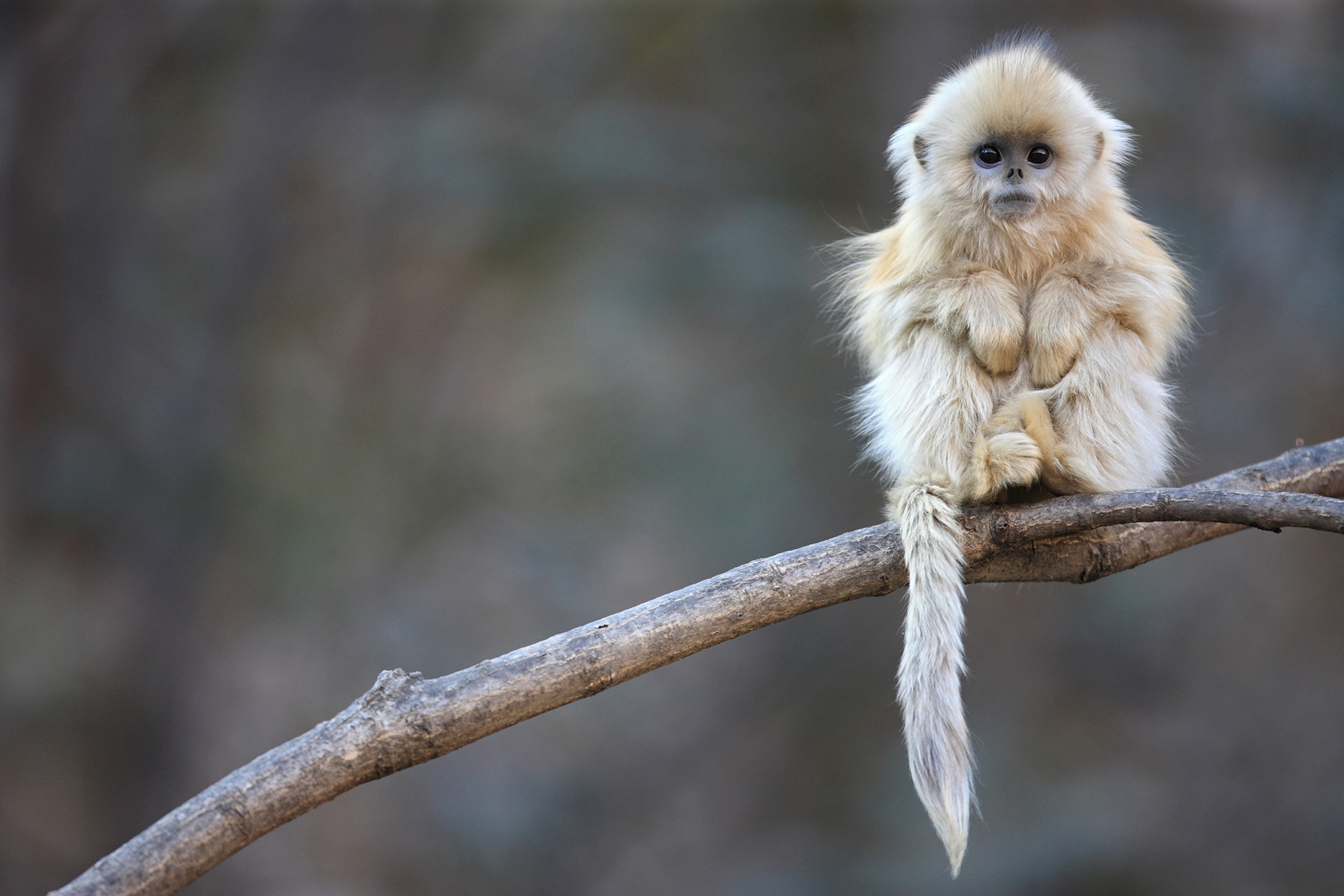
For This Monkey, a Bigger Nose Means a Better Sex Life
A new study nearly two decades in the making sheds light on how the endangered—and distinctive—primate evolved.
It might not hold for humans, but for Borneo’s endangered proboscis monkeys, it’s a way of life: (nose) size matters. Among the primates, the males that most resemble Cyrano de Bergerac have the best shot of playing Casanova.
It turns out that male proboscis monkeys with large noses tend to be bulkier than their small-nosed kin. They also sport bigger testes, up to 1.2 inches wide—upping their chances of fathering a female’s offspring by producing more sperm, crowding out less fertile males if they’re vying for the same female.
Larger noses also alter the males’ mating calls in ways that signal their visual attractiveness. The bigger the nose a male proboscis monkey has, the likelier it is that he’ll have a large, multi-female harem. Males with more delicate facial features, however, more often live in bachelor groups.
The findings, published in Science Advances on February 21, help explain how the proboscis monkey’s iconic nose came to be.
National Geographic grantee Ikki Matsuda, the Chubu University primatologist who led the research, adds that the study’s unusually rich data set—encompassing body measurements, vocal recordings, and social behavior—makes it unique among efforts to understand male primates’ distinctive features. (Read more about the proboscis monkey in our magazine.)
The findings also provide a rich glimpse into the life of a primate whose populations have declined by more than half since the early 1970s, largely due to habitat loss.
“It’s such an interesting species … I really, really hope that everybody is interested in their endangered status,” says study co-author Hiroki Koda, a biologist at Kyoto University who specializes in primate calls.
'Such Sublime Data'
Males and females of a given animal species often look strikingly different, and primates are no exception. Male mandrills have brightly colored red and blue faces, while male geladas sport bright-red chests. These flashy features act as status symbols for other males, billboards for females, or some combination of the two.
Researchers long thought that the male proboscis monkey’s nose played a similar role, but nobody had backed up that hunch with hard data. (See our favorite photographs of primates around the world.)
From 2000 to 2005, Matsuda and colleages observed wild proboscis monkeys along Borneo’s Kinabatangan River. Whenever Malaysian conservation officials temporarily captured males to put on GPS radio collars, the team weighed the monkeys and sized their testes.
Starting in 2014, Koda and Matsuda went even further, recording the calls of male proboscis monkeys kept in captivity. Koda confirmed that bigger noses alter the calls' loudest frequencies in ways that communicate the males' heft and nose size—giving faraway females a chance to weigh their attractiveness, sight unseen.
Hear a Male Proboscis Monkey's Call
“Everything correlated—I’m so happy, it’s such sublime data,” says Koda.
New Clues to Sniff Out
Despite the immense effort, more mysteries remain. For one, how precisely did the unusual nose first evolve?
Alan Dixson, a biologist at Victoria University of Wellington who reviewed the paper, notes that the data don’t show definitively how the noses evolved. They may have arisen primarily as “badges of status” among males or as billboards for females. (Also read about the proboscis monkey being added to National Geographic’s Photo Ark.)
Koda agrees, adding that his colleagues plan on experimentally testing the effects of nose size, perhaps by playing videos of males with varying nose sizes to female monkeys in captivity.
Dixson adds that some young male proboscis monkeys might be late nasal bloomers, potentially affecting the results. In mandrills, young males that strike out with the ladies early on don’t develop bright facial colors until later, a side effect of lower testosterone levels.
“It is possible that male proboscis monkeys in bachelor groups may delay growth of the nose and deepening of the voice until they better able to acquire a unit of females,” he said by email.
Nevertheless, Dixson lauds the study for its fascinating results—which are hardly anything to sneeze at.





















